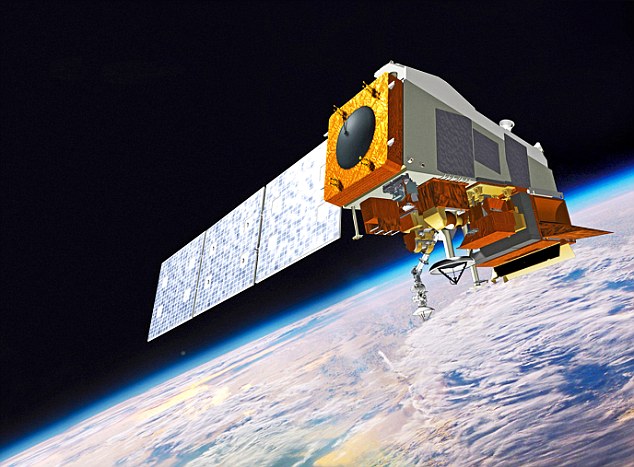Man-made meteor: New estimates put China’s doomed space station, with toxic chemicals on board, crash landing back to Earth in about 3 months — with many toxins surviving re-entry
01/25/2018 / By Frances Bloomfield

In 2016, the Chinese Space Agency conceded that it had lost contact and control of the Tiagong-1, China’s first prototype space station. Officials hypothesized that reentry into the Earth’s atmosphere would occur sometime in 2017. Now, it has been estimated that the Tiagong-1 — which means “Heavenly Place — will finally crash into the earth between March and April of this year. On top of that, it’s also believed that up to 40 percent of the satellite will survive the fall, with some parts containing the dangerous compound hydrazine.
Originally launched in 2011, the Tiagong-1 is one of thousands of satellites in orbit. What makes the satellite dangerous, however, is the fact that it weighs nearly 19,000 pounds. Should 10 percent of it — the minimal amount expected — fail to burn up in the atmosphere, then that’s around 2,000 pounds of satellite debris. Bring that up to 40 percent, and that comes to 8,000 pounds.
Compounding the problem is the presence of a “highly toxic” corrosive chemical known as hydrazine. According to DailyMail.co.uk, hydrazine is an oily, colorless fluid with a highly reactive base. It has a variety of agricultural, military, and industrial applications, one of which is as a rocket fuel propellant. Despite its usefulness, hydrazine is a very dangerous chemical that, at the very least, can result in dermatitis on skin contact. Short-term exposure to elevated levels of hydrazine has been known to result in nausea, dizziness, pulmonary edema, seizures, and may even lead to a person slipping into a comatose state. Long-term exposure, on the other hand, can cause damage to the kidneys, liver, and central nervous system.

As of writing, the exact landing location of the Tiagong-1 remains unknown. The numerous space agencies that have been keeping track of its descent have placed it anywhere between 43 degrees North and 43 degrees South latitude. This means that Greece, Spain, Italy, Turkey, India, and some areas of the United States are at risk. (Related: Video game orbital lasers come to life: Chinese engineers propose to zap space debris out of orbit with giant lasers.)
The idea of being hit by satellite debris is terrifying, particularly when that debris is at least 2,000 pounds. Scary, yes, but the chances of it actually striking down a person is quite slim. A company spokesman for the non-profit organization, the Aerospace Corporation, put out a written statement to assuage any fears of this happening.
“When considering the worst-case locations, the probability that a specific person will be struck by Tiagong-1 debris is about one million times smaller than the odds of winning the Powerball jackpot,” they wrote. “In the history of spaceflight, no known person has ever been harmed by reentering space debris. Only one person has ever been recorded as being hit by a piece of space debris and, fortunately, she was not injured.”
That person was Lottie Williams, a native of Tulsa, Oklahoma. While walking through a park with friends in 1997, she was brushed across the shoulder by what she thought was a stranger. It turned out to be a piece of a Delta II rocket that had re-entered the Earth’s atmosphere the previous night. Williams claimed that the weight of the piece was comparable to that of an empty soda can. “It looked like a piece of fabric except when you tap it, it sounded metallic,” she was quoted as saying.
Still, various state agencies will continue to follow the Tiagong-1’s progress. Especially since the most that can be done at the moment is to gauge the time of the satellite’s reentry within plus or minus three hours of the actual event.
Don’t miss out on any further updates regarding the Tiagong-1 by visiting Space.news.
Sources include:
Submit a correction >>
Tagged Under:
This article may contain statements that reflect the opinion of the author





















